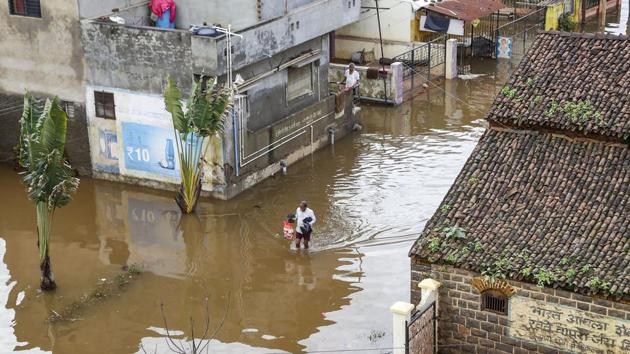After floods, time for a new disaster management plan
Experts are pointing out how the administration was not adequately prepared to handle the situation
The devastating flood in western Maharashtra has so far claimed more than 40 lives. Close to five lakh people were displaced, many of whom have slowly started returning to their homes as the floodwater is receding. The state is now undertaking relief measures to bring life back to normal in the affected areas.

This it is not the right time to raise questions over the preparedness to handle such an emergency as rescue and relief operations are of an utmost priority now. However, these questions are likely to be raised sooner or later. Experts are pointing out how the administration was not adequately prepared to handle the situation.
According to reports, local administration seemed helpless as the flood situation went out of control even before it could start reacting. The National Disaster Response Force and Armed forces handled most of the rescue operations.
After the 1993 earthquake in Latur, the state had worked out a disaster management mechanism. It involved a state-level disaster management plan along with similar plans in each district or city to deal with natural calamities or man-made disasters. It had guidelines for the evacuation of people, places for shelter and a proper response mechanism, including a satellite-based communication system in case the usual communication lines were down. Were such plans for districts like Kolhapur and Sangli useful in the case of flood or did they prove to be outdated? As of now, there is no idea.
The belt from Pune to Kolhapur along the Sahyadris has many rivers, dams and canals. Experts say there is a need to prepare a plan that would factor in extreme situations such as floods caused by heavy rains or dam bursts. They are also wondering why rising water levels were not monitored and why was the local administration not equipped to figure out areas that could bear the brunt and accordingly evacuate people.
Hydrology expert professor Pradeep Purandare opines that there should have been a flood-management plan for the entire river basin or sub-basin. He also stressed the need for a multi-state river basin flood-management plan if a river flows through two or more states. In this case, it was the Krishna river that flows through Maharashtra, Karnataka and Andhra Pradesh.
Officials acknowledged that the government has a dam-wise flood management plan but it is not sufficient when water is released from several dams and the rivers are flooded. If there was a system to anticipate floods and alert the people accordingly, the casualties and troubles could have been much less.
“Our reservoirs are built for irrigation and not flood management. State’s water resources department doesn’t even have a hydrologist. We don’t have the technical capacity to manage floods in a river basin. There is no flood warning system or advanced equipment to monitor the flood situation and alert the people accordingly,” Purandare points out.
One wonders what the successive governments in the state were doing so far. Will the state take note of what went wrong and rectify the mistakes or simply blame the floods? We will know in the coming days.
And while the floods are being talked about, it could be worthwhile for the politicians and state administration to re-look at what happened to the flood-plains along the rivers in the state. Not just in western Maharashtra but in several other areas, constructions are allowed close to the rivers. Residents suffer during the floods, as was seen this monsoon. The state had undertaken the work of redrawing flood lines along the rivers after the flood in 2005. It seems to be back to square one now. Disregard for environmental laws also cost various cities dearly when they witnessed heavy water-logging in July. Several urban areas in Thane, Pune and Nashik were submerged.
“This is going to be severe in the coming years due to climate change. Authorities, including the political class, need to wake up and start planning now,” cautions urban planner Pankaj Joshi.

Stay updated with all the Breaking News and Latest News from Mumbai. Click here for comprehensive coverage of top Cities including Bengaluru, Delhi, Hyderabad, and more across India along with Stay informed on the latest happenings in World News.
Stay updated with all the Breaking News and Latest News from Mumbai. Click here for comprehensive coverage of top Cities including Bengaluru, Delhi, Hyderabad, and more across India along with Stay informed on the latest happenings in World News.





